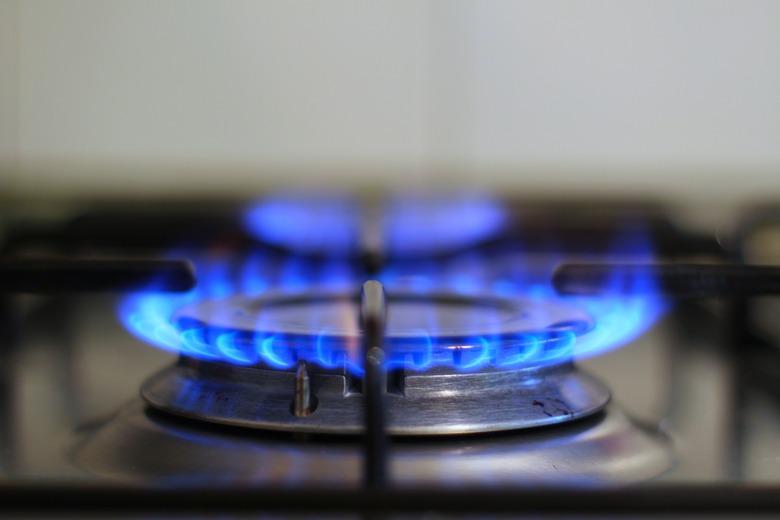How To Clean Stove Burner Grates With Ammonia
Whether you're an amateur home chef or you only cook when you have to, your stove burner grates will eventually accumulate gunk and need a good cleaning. Boiled-over pots and food spills can create a caked-on mess that doesn't wipe off with a damp cloth. Those dirty kitchen situations call for a tough cleaner. Ammonia is an effective cleaner, but it's best left as a last resort when other methods fail, because it's so harsh.
Potential Dangers of Ammonia
Even though ammonia is in many household cleaners and is available in concentrated form, it's a potentially dangerous chemical that requires careful use. When cleaning stove grates with ammonia, you could experience irritation or injuries. Ammonia has a very distinct, strong odor. When you inhale it, you might notice irritation in your throat or lungs. It could make you cough or feel like you have difficulty breathing.
If the concentrated ammonia gets on your skin or in your eyes, it could cause burns. The ammonia can cause damage to your eyes, including blindness. If you ingest it, the ammonia could cause burns inside your mouth or throat. Being aware of these dangers before you use it to clean is important to prevent a potentially serious and painful injury.
Preparing the Burner Grates
Before cleaning stove grates with ammonia, clean as much of the debris off of the grates as possible using other methods. Cleaning stove racks in the dishwasher is a possibility if they're enamel coated. Consult your owner's manual to see if the grates are dishwasher safe.
You can also wash them manually using dishwashing soap or a mild liquid cleaner in warm water. Let the grates soak before scrubbing them with a sponge. Get a little extra scouring power by using a paste made from baking soda and water on the grates. Once the grates are coated, wait 20 minutes before scrubbing them with a sponge. Cleaning stove racks with steel wool can cause scratching, but a nonscratching scrubber can help scour away any remnants.
Rinse the grates well after cleaning them initially. If they're not fully clean, you can move on to the ammonia cleaning method.
Cleaning Stove Grates With Ammonia
To use ammonia, you'll need to put the stove rack cleaner in a bag to lock in the fumes, according to GE Appliances. The ammonia fumes are what help loosen the gunk. Slip each grate into a plastic bag. Pour in about 1/4 cup of ammonia. You don't need to cover the grates with ammonia. You just need the fumes from the ammonia inside the bag. Seal the bag to trap the fumes.
Place the bagged grates in a sink or container in case it leaks. Let the grates sit in the ammonia fumes overnight to give them plenty of time to work.
Rinsing the Grates
Ventilation is very important when opening the bags and rinsing the grates. All of the trapped fumes will come out at once and can cause severe irritation. While wearing gloves, use a sponge to wipe the remaining food remnants off of the grates. You shouldn't need to scrub the grates too hard. Rinse the grates until all of the ammonia is gone.
Safety Tips When Using Ammonia
Only use ammonia in a well-ventilated area. Cleaning the grates outside is ideal for maximum ventilation. If that's not possible, make sure your kitchen has sufficient air flow before using the ammonia. Pour the ammonia carefully to avoid splashing. This can prevent the ammonia from getting on your skin or in your eyes. Wearing gloves and goggles can give you more protection.
